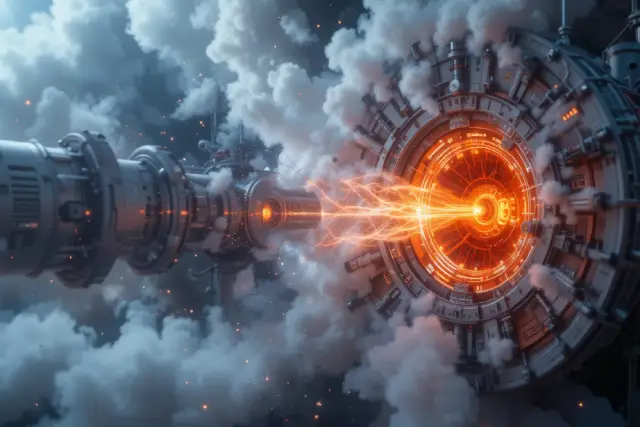Fusion Energy Progress: Will 2025 Finally Deliver Clean Unlimited Power?
The Fusion Energy Race Heats Up in 2025
Nuclear fusion—the process powering the Sun—could soon revolutionize energy. With $6.2B invested in 2024 (Fusion Industry Association), startups and governments are racing to achieve “net energy gain” (producing more energy than consumed). This article explores 2025’s breakthroughs, challenges, and what they mean for a fossil-fuel-free future.
2025’s Fusion Energy Breakthroughs

1. ITER’s First Plasma Tests
Milestone: The $25B ITER tokamak in France will test 150-million-degree Celsius plasma in late 2025.
Goal: Sustain fusion for 300 seconds—10x longer than previous records.
Impact: Validates magnetic confinement for commercial reactors.
2. Helion Energy’s Grid-Ready Prototype
Innovation: Helion’s Polaris reactor uses pulsed magnetic compression (not tokamaks) for smaller, cheaper plants.
2025 Target: Generate 50MW of electricity (enough for 40,000 homes).
Backers: Sam Altman (OpenAI CEO) and Peter Thiel.
3. SPARC’s High-Field Superconductors
Tech: MIT/Commonwealth Fusion’s SPARC reactor uses rare-earth barium copper oxide (REBCO) magnets.
2025 Goal: Achieve Q><|begin▁of▁thinking|> (10x energy output vs. input).
Stat: REBCO magnets reduce reactor size by 40% (Nature Energy 2025).
4. Laser Fusion Goes Commercial
Breakthrough: Focus Energy’s laser-driven inertial confinement fusion hit 130% net gain in 2024.
2025 Plan: Partner with Duke Energy to build a 100MW pilot plant.
5. Private Sector Dominance
Startups to Watch:
- Zap Energy ($1.2B raised): Sheared-flow stabilization tech.
- TAE Technologies ($1.5B raised): Hydrogen-boron fusion.
Challenges in 2025
- Cost: Building a fusion plant costs $3B+—10x a natural gas plant.
- Materials: Neutron radiation degrades reactor walls; Kyoto Fusioneering tests self-healing tungsten.
- Regulation: No global safety standards yet.
How Governments and Businesses Can Prepare
Invest in R&D: Tax credits like the US Fusion Energy Act cover 30% of R&D costs.
Train Talent: Universities like Oxford and MIT now offer fusion engineering degrees.
Partner with Startups: BP and Shell have invested $800M+ in fusion ventures.
FAQs
Q: Will fusion replace solar/wind?
A: No—it’s a baseload energy source (24/7 power) to complement renewables.
Q: Is fusion radioactive?
A: Minimal waste vs. fission. Helion’s process produces no long-lived waste.
Q: When will fusion power homes?
A: Optimistically 2030s, but 2025’s milestones are critical.
Case Study: Microsoft’s Fusion Bet
- Deal: Microsoft pre-ordered 50MW from Helion by 2028 to power Azure data centers.
- Risk: First-ever fusion power purchase agreement (PPA).
Final Thoughts
2025 is fusion’s make-or-break year. While challenges remain, the tech is advancing faster than skeptics predicted. Investors and policymakers must stay agile to capitalize on this $40T opportunity.
Also Read: Lab-Grown Meat: Sustainable Protein Solutions for 2025 and Beyond






